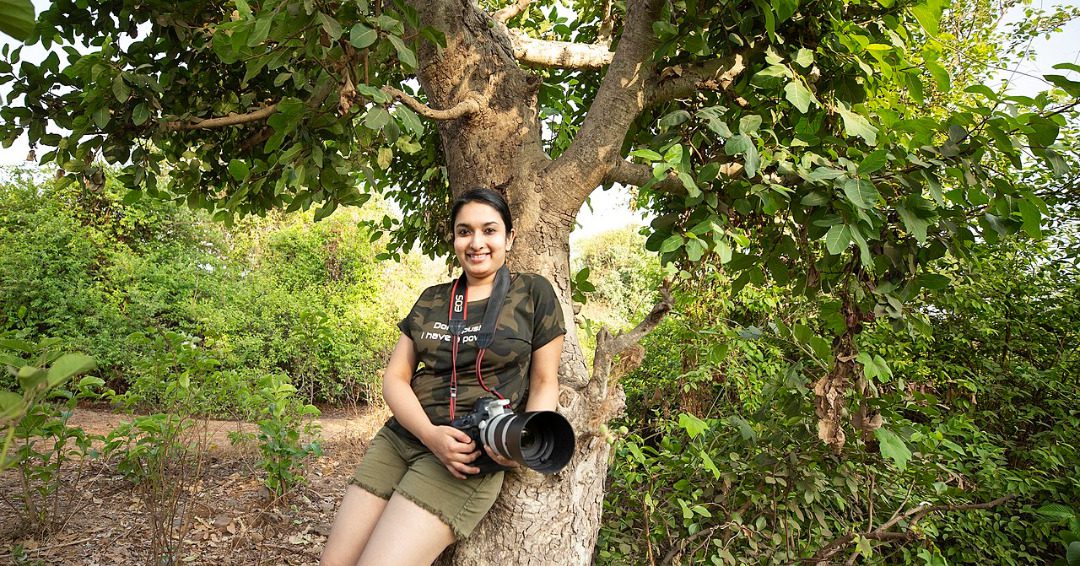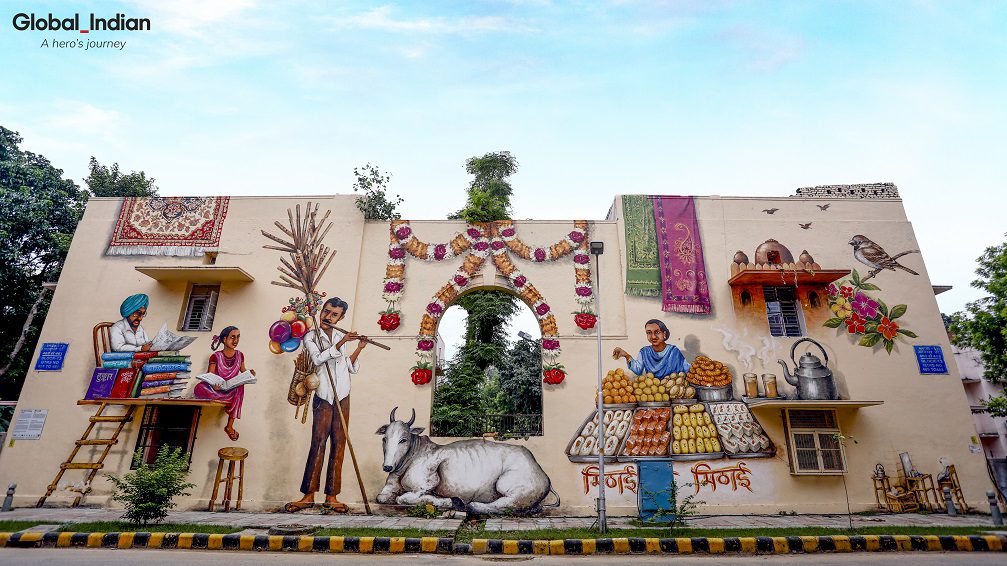(October 24, 2021) The wilderness is her office, Nature, a constant companion. The first Indian to win the coveted Wildlife Photographer Award in 2020 for her photograph on fireflies Lights of Passion (chosen from 50,000 entries from 80 countries) Aishwarya Sridhar’s entry held pride of place in the august halls of the National Museum of History in London at one time.
For a girl who grew up in the hustle and bustle of Panvel, the outdoors entranced her as she pranced along with her father on treks – who as a life member of the Bombay Natural History Society instilled a love for wildlife in her. Spotting a colourful dwarf Kingfisher or awed at the luminous glow of fireflies flitting in the Western Ghats, Sridhar found the power of the medium, with a conservationist spirit.
“Every day is a new adventure. I look forward to spending time in the wilderness,” says the preservationist, who cherishes all those moments in verdant landscapes but feels most fortunate to have seen a tigress training her cubs to hunt in the wild. Sridhar is also the winner of Sanctuary Asia’s Young Naturalist Award, the Princess Diana Award, and is a Jackson Wild summit fellow (considered the Emmy of wildlife filmmaking).

An eagle clicked by Aishwarya Sridhar.
The intuitive soul
This Global Indian is now working on a two-part TV series showcasing the survival stories of the seven endangered primates of India and the folk that protect them.
Each project engulfs Sridhar into a verdant world and its creatures. Straddled with a Canon 1Dx mark ii and Canon 5d mark iii, she sees wildlife with an intuitive soul. Queen of Taru, a film she researched, scripted and directed started off as a passion project in pursuit of the wild Bengal Tigress Maya in the forests of Tadoba, and her struggle of survival in a male dominated world. “After six years of tracking her, I finally gave her a celluloid salute. I learnt that animals are capable of strategy just like humans, and they are capable of feeling emotions, When I got to know that Tiger Queen of Taru would be airing on Nat Geo WILD, that felt fulfilling, I was grateful,” says Sridhar.

A tiger in the wild.
Art with a cause
Going into unexplored territory led her to Panje, a wetland she has been visiting since childhood. Witnessing a gradual loss of habitat at Uran, her connect with the local fishing communities helped her in research which she presented in a 14-minute documentary on DD. “The most interesting finding was that the so-called ‘illiterate’ (local tribals) know the value of our ecosystem and its role in our survival more than the educated who so easily give orders for destruction. The film and photo-story helped bring a Bombay High Court Order protecting Uran, thus saving the livelihoods of around 2,500 fishermen. The Panje wetland is now recognised as a satellite wetland, and will soon receive the status of a ‘conservation reserve’,” says the eco warrior, who is also an emerging fellow at International League of Conservation Photographers, working towards policy-level protection for the wetlands in Mumbai.
Sridhar was selected to feature on My Place on Earth – a digital series by BBC Earth in 2021, and is ecstatic about the episode filmed online with some on-field content pre-shot by her. A self-taught photographer, her initiation with the camera began with her father showing her the basics. A course by acclaimed wildlife photographer Sudhir Shivaram added context, though she giggles saying, “every trick I have learnt is from YouTube and by experimenting.”

Aishwarya Sridhar
A multi-hyphenate
Even with filmmaking, Sridhar learnt by watching films on National Geographic, Discovery and Animal Planet. She has since self-taught, edited, presented, and directed an eight-part web series for World Wildlife Fund India. She also did a film for the state forest department and the Deccan Conservation Foundation on the unique and endangered wildlife of the Deccan Plateau. “During the lockdown, I ideated on inculcating the love for Nature in children using origami for WWF-India. I brought Nature indoors with the series titled Fun-Crafts with Aishwarya (digital),” says the shutterbug, whose series helped further with a collaboration with Discovery Channel. It partnered in another unique live show that focused on spotlighting endangered species in India through interesting conversations with India’s top wildlife photographers, filmmakers, and scientists. “I am one of the youngest presenters to have hosted a live show on Discovery,” says the girl, who loves to write poetry in her free time, no doubt inspired by her lush office.
Her upbringing has instilled a deep conservation mindset with focused hard work. “From the age of eight, I have explored India’s wilderness. My parents have always encouraged my curiosity, and raised me with a lot of outdoor exposure which helped immensely,” she says, thrilled that she finally has incredible mentors.

A wasp clicked by Aishwarya Sridhar
Believing staunchly in the power of self, her transition from photography to filmmaking was game-changing. “I never thought of becoming a wildlife filmmaker initially. As I got older, I knew I would never be happy at a desk. So, I chose mass media for graduation though Mumbai University doesn’t offer any filmmaking specialisations. It was daunting. But I worked on myself every day, and still do so,” says the filmmaker, who now wants to try filming with 360-degree VR.
A path peppered with milestones
Each award is a milestone leading her to the next. For instance, for the “BBC Wildlife Your Shot Competition, the pictures of a bonnet macaque alpha male, flamingos in Navi Mumbai and a baby lion-tailed macaque with its mother were winners. Each picture is special, and documents a moment in nature that is otherwise overlooked”, she explains.
A part of the award-winning podcasts Eyes on Conservation now titled Earth to Humans, by the Wild Lens Collective, connecting with natural history storytellers from around the globe enthuses her. “I hope to start my own natural history media outlet in India in the next decade,” says the 24-year-old, who is hugely inspired by award-winning filmmakers Beverly and Dereck Joubert, whose Big Cats Initiative and films have her enthralled.

Flamingoes of Mumbai, clicked by Aishwarya Sridhar
Even though the pandemic has upended much travel, it is slowly opening up. Back to her wilderness address, Sridhar has some great filmmaking projects in the pipeline. She feels travel and Nature teaches one adaptability and patience. “With every animal/bird you photograph the strategy changes. You should be able to adjust to extreme weather conditions and be physically fit to get the maximum out of your trip. Being a Gen-Z kid, I expected instant gratification, but wildlife photography teaches you persistence. There may be times when you don’t see the animal/bird, and you may not get the photograph you have in mind, but it’s important to never lose your calm in these situations,” she advices.
Mother Nature has been her constant teacher, and she hopes humans learn to protect their habitats. “Whenever Nature gets hurt, she repairs herself and continues on. In the same way, I try to be positive and keep working hard,” she says.
Follow Aishwarya Sridhar on Instagram



